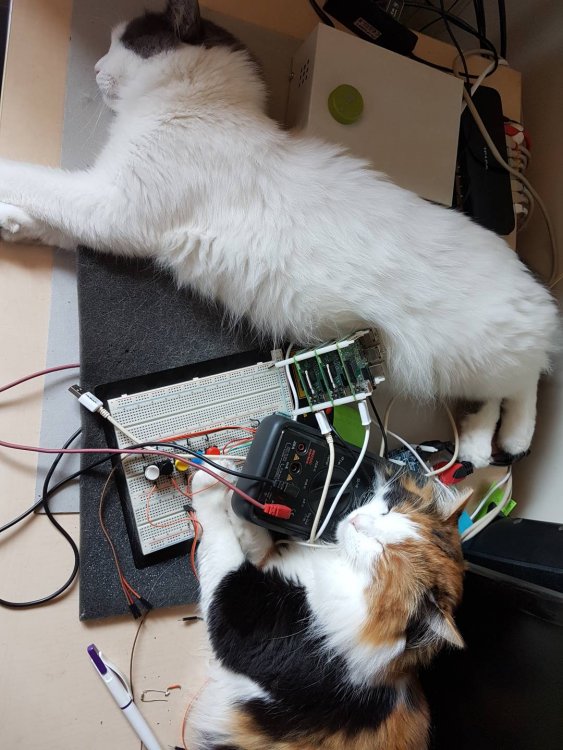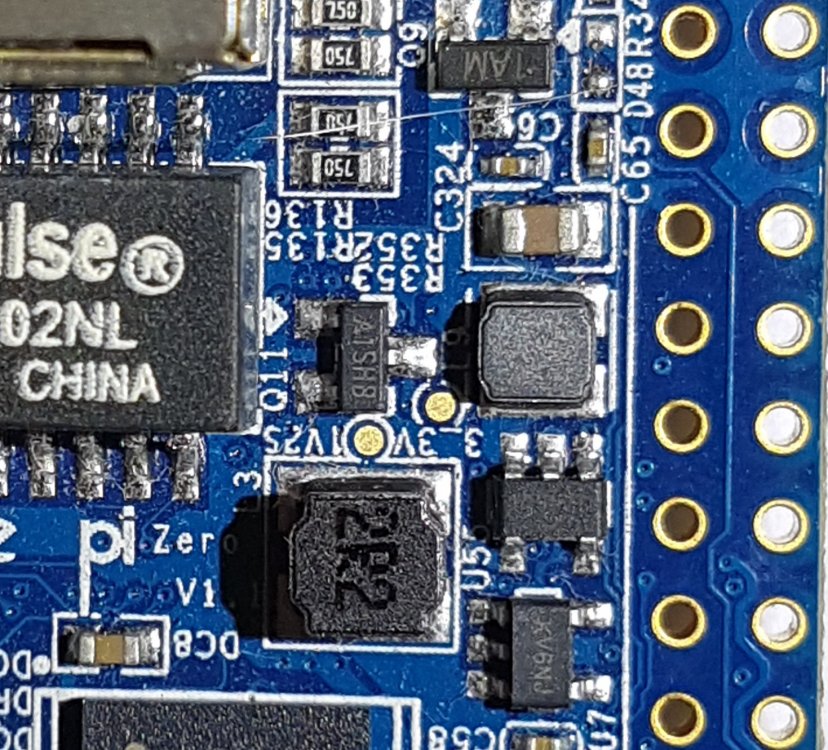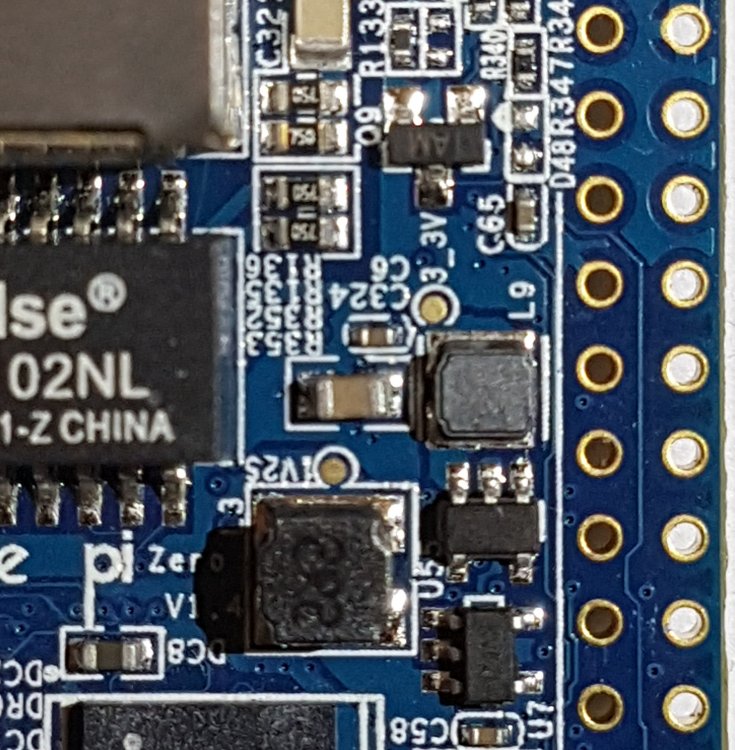-
Posts
97 -
Joined
-
Last visited
Content Type
Forums
Store
Crowdfunding
Applications
Events
Raffles
Community Map
Everything posted by bozden
-
IMHO a release scheduled is always a good practice. I know you guys want to minimize releases because of the number of builds (your time and CPU time). But if you want to well define things like the above, this can be one of it. Something like (i.e. for downloadable images) Armbian releases come out every first monday of a month. Armbian beta relases come out 1 week before that. Plus a better detailed changelog is a must. Forum searches or the one on the documentation are not sufficient. Just as an example, I wrote lots of install scripts in v5.25 and some are failed in v5.27 I downloaded last week. I don't know what changed in motd modification for example, I have to fish it.
-
Thank you for this... This is a quite valuable resource...
-
I'm not sure but this device I use can be the culprit - I put here just for future reference. Needs further testing... https://www.aliexpress.com/item/3-Port-HDMI-Switcher-Splitter-3-input-1-Output-Box-HDMI-Selector-Switch-for-XBOX-360/32787229720.html One interesting thing is: If you plug out an HDMI cable from this device, it finds a working one and switches to that one. But if I shutdown the Orange Pi, the LED stands lit and it does not switch... So HDMI output of OPi is alive somehow... I think I read about "not completely powered off" somewhere. Anyway. Turning off the HDMI at hand does not turn of the LED either, so it is seen as alive on the outside devices (that is a good thing for me, as most devices start to scan inputs if current input signal got lost).
-
Yep, on a new install it worked... Thank you for that nice solution BTW...
-
@tkaiser @jernej I definitely could turn off the display output but cannot get it back with "4 10" into param (FYI: This is OPi One with legacy Ubuntu desktop running Armbian 5.27) To turn of: echo "switch" > /sys/kernel/debug/dispdbg/command echo "disp" > /sys/kernel/debug/dispdbg/name echo "0 10" > /sys/kernel/debug/dispdbg/param echo "1" > /sys/kernel/debug/dispdbg/start To turn on (I've been using 1080p60 in h3disp): echo "switch" > /sys/kernel/debug/dispdbg/command echo "disp" > /sys/kernel/debug/dispdbg/name echo "4 10" > /sys/kernel/debug/dispdbg/param echo "1" > /sys/kernel/debug/dispdbg/start I tried reboot OPi One hot unplug/plug unplug/plug HDMI cable from monitor unplug/plug monitor power used h3disp -m 1080p60 once again and reboot Interesting enough "cat /sys/kernel/debug/dispdbg/param" outputs only "4"...
-
@tkaiser Yes, legacy, I need video acceleration with 1080p higher bitrate videos (for animations it is a must)... That link you shared is very promising, I'll give it a try right away !
-
Nope, it is for a local museum... Non-profit They have looping media players and I try to make them button controlled... But of course it can go commercial in the future... I examined both kiosk and digital signage first but decided to go in Armbian way to have more control... I don't know if I made a mistake or not thou...
-
Using legacy Ubuntu desktop image (currently with OPi One)... The application will be in a public place and will be shutdown/power up by a personnel. Whenever my application starts, I have full control of the display area. On the other hand: * At the very startup boot process with armbian logo is shown * Desktop does uploaded and shown shortly (my application starts with automatic user login) * In case of a shutdown (button press, IrDa, remote control etc) the desktop is shown again, screen gets blank and up again, shows login and shuts down (do your boards do that?)... How can I prevent these? What I tried: * Looked if I could turn on/off HDMI output (just got confused) * Cleaned away desktop (icons, panel, wallpaper) and used a clear background (but it is seen several seconds anyways) What can I do? Any pointers? PS: The solution I seek needs to be display independent. Sometimes X brand projector, sometimes Y brand TV, new, old etc... But controlling the device through HDMI is an option too (if only I knew how)...
-
I apologize for intrusion, but here are some ideas: * You may like to open ONLY COMMUNITY SUPPORT forums for not officially supported boards (old or new) and owners of these boards can help each other - instead of deleting, just move the topic there. * Low end boards and X : It is not always a desktop replacement. If the board has HDMI or other display output, but not enough memory, one can use it as a video looper/player or an IoT device with touch support. No more office, no more mail etc...
-
Well, as a end-application developer I find this board and its power very promising. But if only HARDWARE ACCELERATED VIDEO drivers exist... If not, it is not so useful for me... I don't want to be stuck in legacy Ubuntu desktop with a lot of bloatware...
-
Yes, keeping them out when soldering is a must. Jumper cables, LED's, buttons, sensors - no matter what I plug - they are "game" (in both meanings). And I need to recheck breadboards in every test run.
-
-

New OPi Zero - Yet another high temperature issue...
bozden replied to bozden's topic in Orange Pi Zero
Yes, that is what I wrote to OPi forums. I think the point they have is "we boosted it, cool it - or underclock it to reverse". The Zero's were already hot and they made them hotter. Not suitable for summer projects I never used WiFi on these boards yet as I read about the performance in your tests. I'll test them whenever possible with similar setup like your tests. I'm working with OPi One's now and I have to finish them first. -

New OPi Zero - Yet another high temperature issue...
bozden replied to bozden's topic in Orange Pi Zero
@tkaiser Here is the explanation of the engineer. Active cooling seems to be a must, especially if it is boxed... I don't know about the performance increase thou. -
I tried to compile any distro for the first time, so I'm a total n00b here (used Oracle VirtualBox on a Win x64 machine, Ubuntu 10.04.02 x64)... They seem to be compiled fine. Moved the result images, written to new SD Cards with Etcher... Legacy Ubuntu server did boot. Legacy Ubuntu Desktop did not boot (even red/green lights did not light up). Can you give me some starting points or links about how to deal with this issue? Thank you in advance... BTW: I'm giving a shot to this to get rid of unnecessary SW installed in the desktop version, such as LibreOffice etc... I also don't know if this is possible...
-

New OPi Zero - Yet another high temperature issue...
bozden replied to bozden's topic in Orange Pi Zero
Here is the link to OPi forum post (with hope of having an answer)... http://www.orangepi.org/orangepibbsen/forum.php?mod=viewthread&tid=2759&extra= -

New OPi Zero - Yet another high temperature issue...
bozden replied to bozden's topic in Orange Pi Zero
Yes, I read a lot about it in these forums, mostly with your input... I already measured the reference voltages and posted above. It is not the 7 USD I care about but this tiny board seemed to be nice for some applications (with its nice box). If the problem is design related, ordering new ones is not meaningful. -

New OPi Zero - Yet another high temperature issue...
bozden replied to bozden's topic in Orange Pi Zero
I'm a noob on these things but can it be related to voltage regulator changes and Armbian kernel parameters? Should I try to underclock / undervolt etc? I'll check the Orange Pi forums in the meantime... -

New OPi Zero - Yet another high temperature issue...
bozden replied to bozden's topic in Orange Pi Zero
OK, here it is: v1.1 PCB's (OPiZ-1 & OPiZ-2): Thumb test drops the temperature from 47 to 41-42 by 5-6 C OPiZ-3 (this time also tried with legacy Ubuntu image with same results): Drops from 65 C (cooling mode) to 58-59 C by 6-7 degrees. I had to cool my thumb by one second and press again, thus the fluctuation. There is definitely something wrong with this board... -

New OPi Zero - Yet another high temperature issue...
bozden replied to bozden's topic in Orange Pi Zero
BTW, on #1, the temperature also dropped by about 5 degrees, from 46-47 to 42... -

New OPi Zero - Yet another high temperature issue...
bozden replied to bozden's topic in Orange Pi Zero
The thumb on #3 belonged to my son It also burned, my son could just say "15 Mississippi" before shouting... On #1 I used my little finger, there the skin is thinner I'll try all 3 later after by burns heal -

New OPi Zero - Yet another high temperature issue...
bozden replied to bozden's topic in Orange Pi Zero
OPiZ-1 Thumb test results (OOPS this is copy-paste mistake "it starts with 59 C and reaches 63 C after 10 minutes" - actual is it starts with 39-40 and rises to 46-47): armbianmonitor -m (thumb could not pressed, tried little finger because of expansion board... Pressed at about 15:31:11 until finger burns) armbianmonitor -u output is here: http://sprunge.us/KidA CPU section: -

New OPi Zero - Yet another high temperature issue...
bozden replied to bozden's topic in Orange Pi Zero
OPiZ-3 Thumb test results (it starts with 59 C and reaches 63 C after 10 minutes): armbianmonitor -m (thumb pressed at about 14:46:45 for 15 seconds and temperature drop is 5 C) armbianmonitor -u output is here: http://sprunge.us/gbYB CPU section: -

New OPi Zero - Yet another high temperature issue...
bozden replied to bozden's topic in Orange Pi Zero
Here are test point voltages in OPiZ-3. USB power meter shows 5.305 on the supply side. 3.3V seems off... I will try with another supply later... TEST POINT VOLTS 1.5v 1.5 3_3v 3.39 1v2s 1.21 AVCC 3.388 RTC 3.388 1V2C 1.119 5V PIN ON CONNECTOR 5.14 -

New OPi Zero - Yet another high temperature issue...
bozden replied to bozden's topic in Orange Pi Zero
OK, will do... They are disconnected now... I examined the boards. Old ones are v1.1 the new ones are v1.4... Also the layout (and circuitry) did change ! It seems that (if I'm not mistaken) in VCCIO 3.3V/1A circuitry Q11 is gone and there are changes in U55, U7, U4 voltage regulators... Attached images of related portions. v1.1 boards v1.4 board (problematic one)




